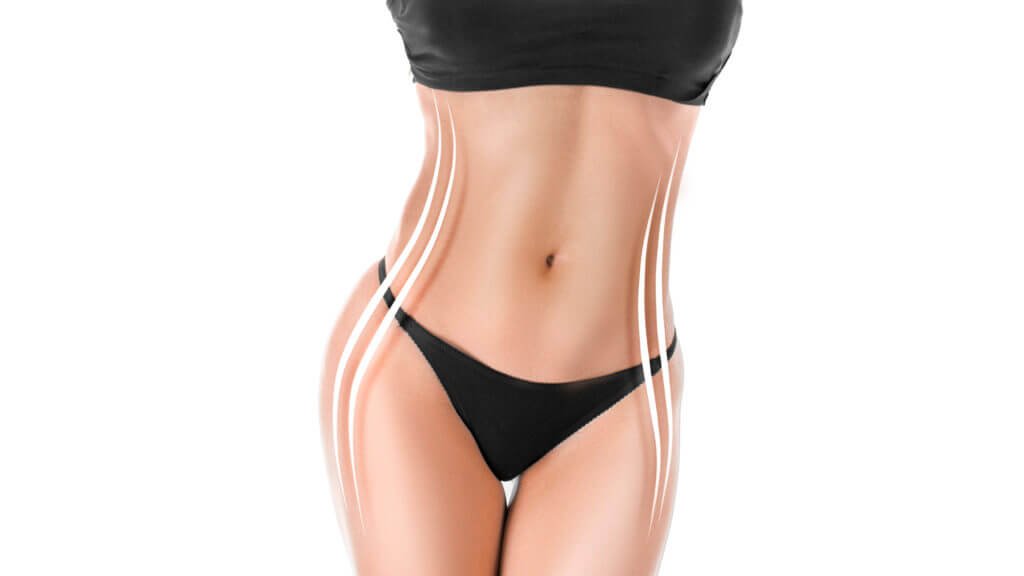Body contouring is today’s approach to modern body sculpting. This treatment eliminates fat, shapes body parts, and tightens skin. Also called lipolysis, this non-surgical option uses cold, heat, lasers, and other proven methods. Meanwhile, surgical options include processes such as lifts, tucks, and liposuction. Surgery involves a riskier and much longer recovery time. However, it typically offers much more noticeable results.
Today, let’s know more about body contouring and your options for taking advantage of this reshaping treatment.
What is Body Contouring?
Body contouring, also called body sculpting, is a medical procedure that involves surgery. It aims to reshape areas of the body. Typically, body contouring does not aid in weight loss. Instead, this procedure helps in shaping the body. It is also utilized to address areas where weight loss isn’t as effective as other body parts. You can also add this treatment after significant weight loss that only results in extra skin. Body contouring may involve steps in:
- Getting rid of extra skin.
- Eliminating stubborn, excess fat.
- Reshaping or contouring treated areas with fat deposits.
Different Body Contouring Types
Lipolysis is body contouring that doesn’t involve surgery. Although results differ at times, several lipolysis methods available in the market today include:
- Cryolipolysis – destroys fat deposits using frigid temperatures.
- Injection lipolysis – targets fat cells by putting deoxycholic acid into the body.
- Laser lipolysis – eliminates fat deposits with lasers.
- Radiofrequency lipolysis – diminishes fat cells by way of heating and ultrasound waves.
On the other hand, surgical options for body contouring include:
- Lifts and tucks – are surgical procedures that remove excess fat and even extra skin. Examples include tummy tucks or abdominoplasty, facelifts or rhytidectomy, breast lifts or mastopexy, and double chin surgery.
- Liposuction – “lipo” procedure suctions out stubborn fat deposits in the body.
Body Sculpting Uses
Those who resort to body contouring want to achieve the look, feel thinner or attain specific shapes they want. This procedure is more often used on particular body parts that diet and exercise cannot create any difference.
Surgical options are also available for removing extra skin in making the skin look much smoother and younger. Body contouring procedures help those with excess skin even after significant weight loss. This treatment also improves loose, saggy, or wrinkled skin because of natural aging.
Body contouring helps target body parts that are common fats sites that include:
- Arms.
- Back.
- Bellies.
- Chin area.
- Flanks or love handles.
- Buttocks.
- Neck area.
- Thighs.
The Procedure
Surgical procedures for body contouring involve these standard steps:
- Pre-operatively marking of the targeted sites
- Patients being positioned on surgical tables and doing safety checks through anesthesia and nursing
- Administering anesthesia, either local or general, depending on what the procedure needs
- Cleansing and preparing the surgical area’s skin
- Making incisions on the skin based on the procedures being performed
- Cutting, repositioning, or shaping tissues and excess fats, creating the desired look
- Expected tightening of muscles during abdominoplasty
- Trimming excess skin
- Suctioning out excess fat with liposuction, either by itself or in conjunction with other procedures
- Closing all incisions upon completing the procedure
- Applying bandages
During most non-surgical lipolysis, procedures usually occur inside offices or medical clinics. A regular session takes around 30 to 60 minutes, with most people undergoing several treatment sessions towards optimal results. Steps that typically transpire can include:
- Giving patients robes or hospital gowns to wear
- Positioning patients on comfortable chairs or tables
- Marking the skin using pens or markers
- You are injecting the drug in the area where fat reduction wants to be achieved (for injection lipolysis).
- Using tools like paddles or wands in delivering methods such as ultrasound waves, laser beams, cold or heat, based on the lipolysis types used
After the body contouring procedure, most patients go home the same day, even after experiencing surgery. Having someone take and drive you home and stay with you during the first night would be best if you have undergone surgery. You may be given a thin tube near one or more incisions to drain excess fluid and help prevent potential swelling.
Recovery instructions given to you by the surgical team may include:
- Caring for the drains
- Changing the bandages
- Regulating over-activity, but ambulating or moving around to help avoid blood clots
- Reporting complications explained pre-operatively
- Avoiding exposure to the sun
- Using medications like ointments or pills to control possible pain or prevent potential infection
Non-surgical body contouring allows patients to leave the office or clinic immediately after the procedure. Needing someone for a ride home won’t be necessary, and patients can directly go about their day as usual.
Body Contouring Benefits
Most patients report expected benefits after body contouring that include:
- Smoother skin
- More defined, well-shaped body parts
- Younger, thinner appearance
- Symptomatic improvement
Surgical results are much more immediate and noticeable. Non-surgical options, on the other hand, may take a few more weeks or months before seeing prominent differences.
Risks or Complications of Body Contouring
Like any procedures like lifts and tucks, certain risks are expected for body contouring, although relatively uncommon. These potential risks can include:
- Asymmetry or both sides not looking the same
- Bleeding or excessive blood clots
- Complications from anesthesia like nausea, vomiting, or waking up concerns
- Damages to body parts, such as the nerves, blood vessels, muscles, or organs
- Hair loss located near your incisions
- Hematoma or blood pockets beneath the skin, which needs to be drained
- Incisions that don’t correctly heal
- Infections on the treated sites
- Nerve injuries resulting in weakness, numbness, or skin feel changes
- Pain or swelling lasting longer than expected
- Problems with essential organs like the heart or lungs
- Results that could require follow-up surgery because you don’t like them
- Scarring, discoloration, or rippling of the skin
- Skin discoloration and irregularities
For non-surgical options for body contouring, risks are much more controlled and limited and can include:
- Hives or rashes
- Pains or sores
- Redness
- Swelling
Unsatisfactory results you may not like may need additional and repeated sessions before you fully achieve them.
Recovery Time After Body Contouring
Recovery time for surgical body contouring options may take weeks to months, based on the amount of work done and the size of the incisions administered. With non-surgical options, recovery times are much shorter. Most people return to work and other usual activities after undergoing body contouring.
Final Thoughts on Body Contouring
Body contouring helps eliminate fat and shape the body when diet and exercise aren’t helping. Getting your ideal weight improves the quality of results dramatically with much lower complications. Talk to your doctor or healthcare provider about your body contouring options and their potential risks.
Do you want body contouring to happen for you? Our awesome friends at Soul and Beauty Med X can help you today. Visit them now! https://soulandbeautymedx.com/









